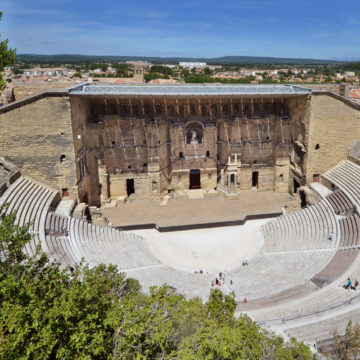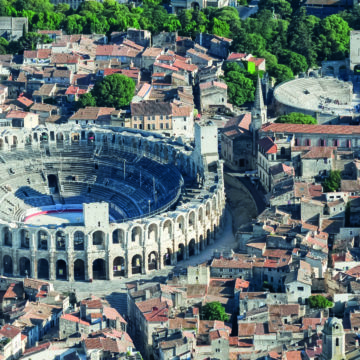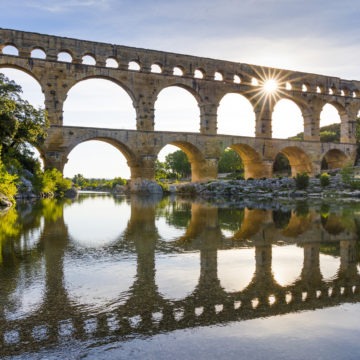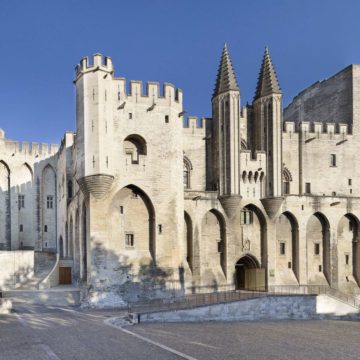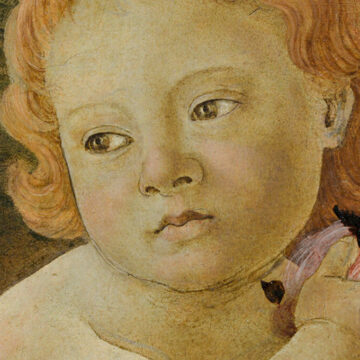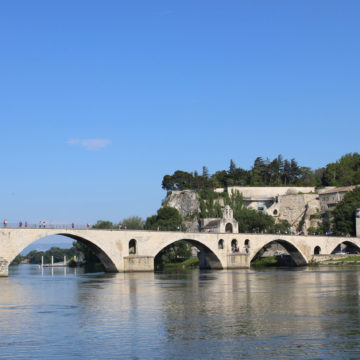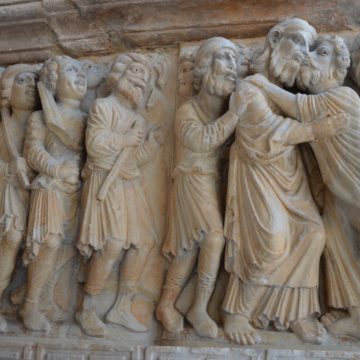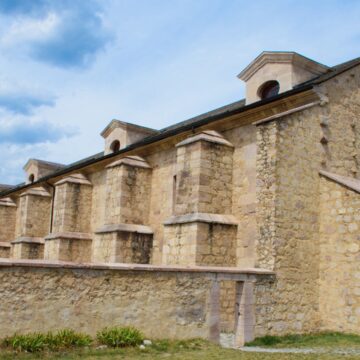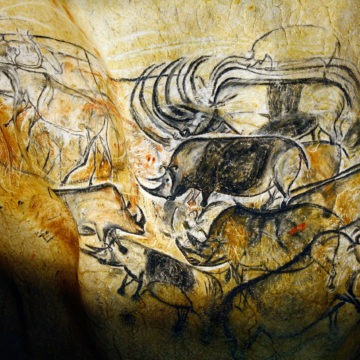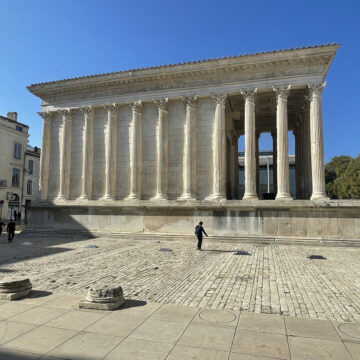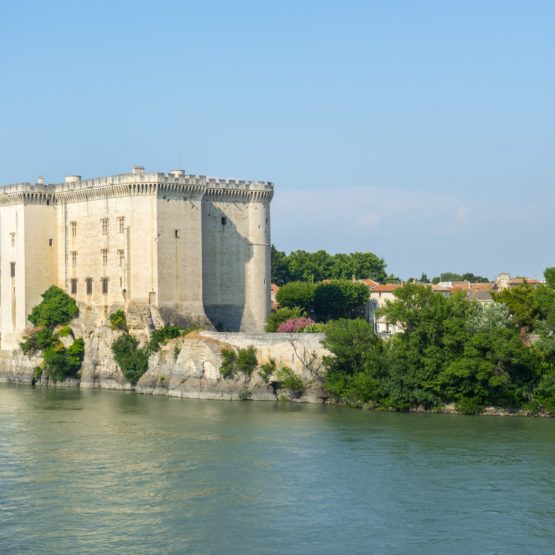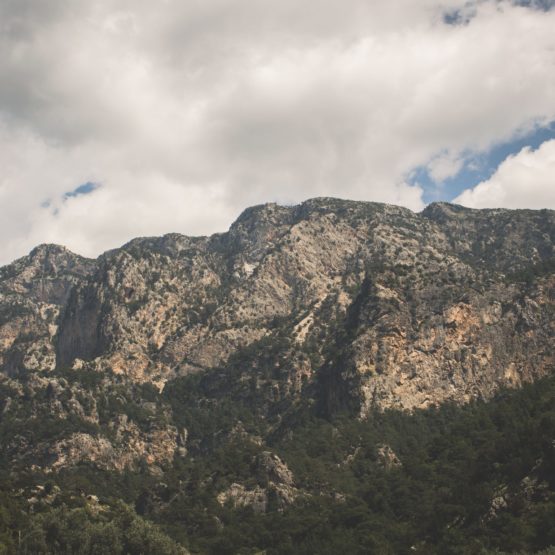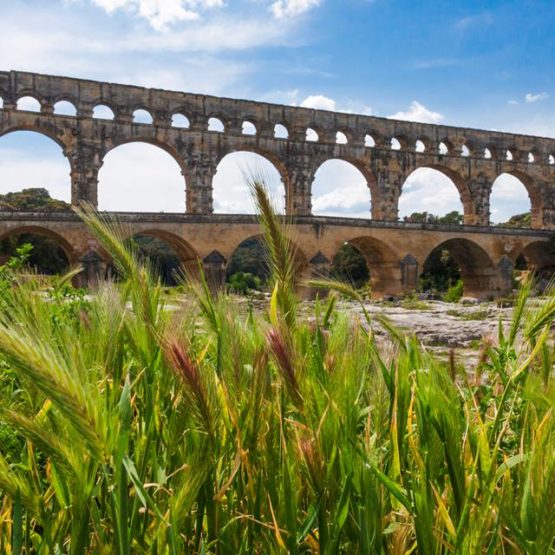Route ideas
UNESCO World Heritage sites in Provence
In 2018, France has 43 UNESCO World Heritage sites. Provence has 8 listed sites, making it one of the richest regions in France.
Listed in 1981: the Roman Theatre and surrounding areas, and the Arc de Triomphe in Orange
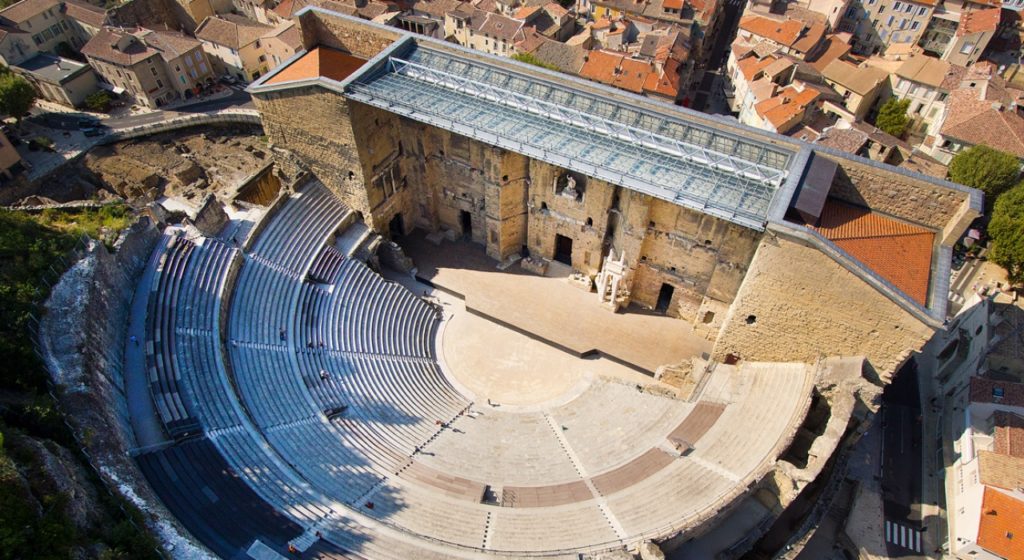
The Roman Theatre in Orange, with exceptional vestiges dating from the age of Imperial Rome, has a 103m-long façade, and is one of the best-preserved major Roman theatres. The Arc de Triomphe in Orange was built between 10 and 25 AD, and is one of the finest triumphal arches of the Augustinian period with its bas-relief sculptures recounting the development of the Pax Romana.
With a double ticket you can visit the Roman Theatre and the nearby Art and History Museum, where the history of Orange is recounted from Antiquity to the 20th century. A wide range of multimedia tools (free audio-guide in 10 languages, a free application to download, a show called “The Ghosts of the Theatre”), enhance the visit, making the architecture in the sites and the history of public entertainment in Ancient Rome accessible to all. The show/visit “The Ghosts of the Theatre” blends optical theatre, video projections and music to bring to life the highlights and the people who have performed on the stage in this wonderful monument from Antiquity to today.
The new virtual tour of the theatre as part of a 50-minute guided visit includes a 6-minute “total-immersion” film. In a specially designed room, visitors can enjoy a total immersion experience with individual 360° video projections and a virtual reality headset (Oculus Rift model with built-in sound). Spectators are transported back to 36 B.C. to see the foundation of the city of Orange and the theatre being built. Stone after stone, the theatre takes shape and unveils its majestic decorations.
Listed in 1981. Roman and Romanesque Monuments (Amphitheatre and Theatre) in Arles
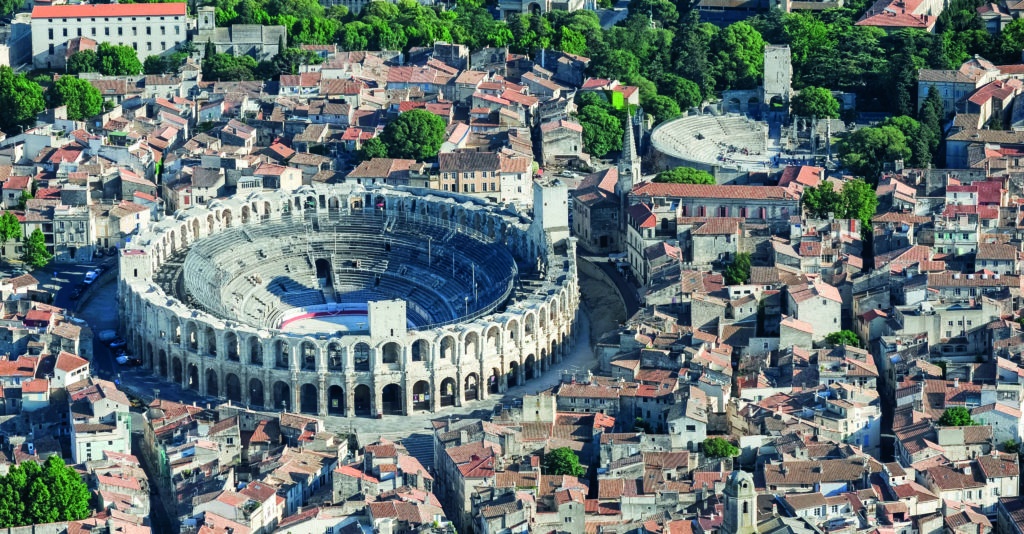
Arles, between Camargue and World Heritage
04 90 18 41 20 – – Tourist Office
Arles has the most Roman monuments after Rome itself: arenas, a Roman theatre and cryptoporticoes dating from the 1st century BC. The Constantine thermal baths and the Alyscamps necropolis bear witness to a second golden age in the 4th century. In the 11th and 12th centuries, Arles once again became one of the most beautiful cities in the Mediterranean world and a major stage on the Way of Saint James. Inside the town’s walls, Saint-Trophime with its cloister and Montmajour Abbey, nearby, are major monuments of Provençal Romanesque art.
A range of 1 to 6-month “Monuments Passes” are available to access the 6 monuments (Amphitheatre, Roman Theatre, Constantine Thermal Baths, Cryptoporticoes, Alyscamps, Saint Trophime Cloister) and 3 museums (Réattu Museum, Camargue Museum, Musée de l’Arles Antique). “Arlestour”, a mobile app, makes it easy to visit the city, where alongside the UNESCO heritage sites, you can experience an exceptional cultural and historical heritage.
The city has a large number of classical and Renaissance mansions. The Van Gogh Foundation pays homage to the master and to major contemporary artists (Van Gogh painted almost 300 works in and around Arles and a walking tour has been dedicated to him). The Luma Foundation, located in an internationally unique new and refurbished site, including the famous 56-metre high resource building designed by the architect Franck Gehry, provides a vast area for contemporary creation in all its forms. A major international photography event takes place each year in the city, “Les Rencontres Photographiques”.
Listed in 1985: the Pont du Gard
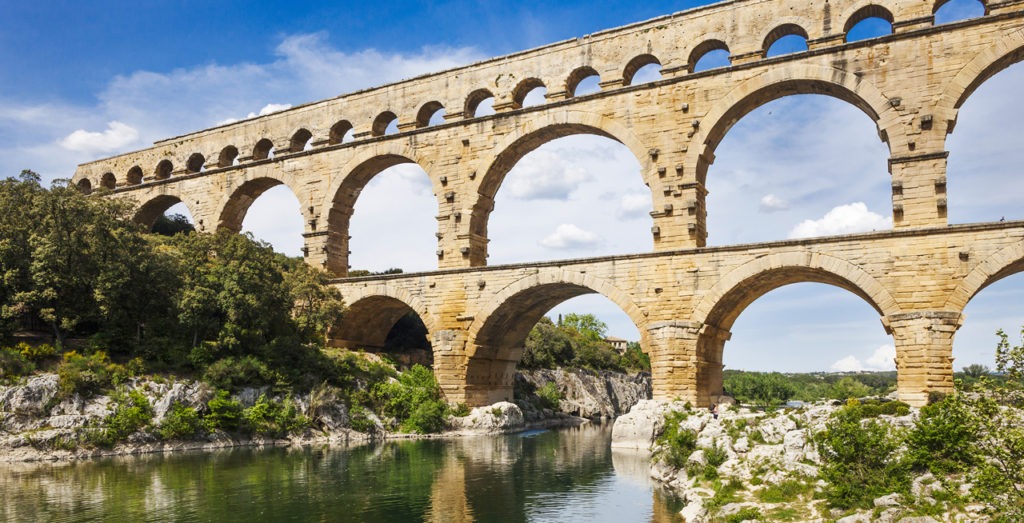
The Pont du Gard, a bridge dating from the 1st century AD, was a section of the 50km-long Nîmes aqueduct across the River Gardon. It stands 49 metres high, 275 metres long and has 3 rows of superimposed arches. It is the highest Roman aqueduct bridge in the world. The Roman hydraulics engineers and architects created a technical masterpiece, but also a work of art.
The Pont du Gard site is a vast 165-hectare “playground” with swimming areas on the River Gardon, and many cultural centres of interest to all members of the public.
Admission to the site includes a visit to the cultural areas. The museum, the biggest educational centre in France on the architectural achievement of Rome, tells the story of the Roman aqueduct with models, virtual reconstructions, multimedia screens and sound atmospheres bringing the visit to life. “Ludo” is an educational museum area for children and families. “Ciné”features documentaries and fictional films. Garrigue Memories is an open-air visit exploring the history of Mediterranean agriculture, with a look at the specific regional conditions and the vestiges of the Roman aqueduct.
At the site a large number of events are also organised, including the Pont du Gard light show, from 15 May to 31 August; in June Les Fééries du Pont, a show blending sound, light, fireworks and video morphing; temporary art or science exhibitions; concerts, etc.
This convivial site on the banks of the River Gardon has a wide range of restaurants and shops. A multimedia guide is available in 8 languages.
Listed in 1955: the Historic Centre of Avignon with the Palais des Papes, the episcopal buildings (Notre Dame and the Doms gardens; Petit Palais Museum), the ramparts and the Pont d’Avignon.
The Palais des Papes
Nine popes had their court in Avignon. The Palais des Papes, the main mark of their residence here, was a symbol of the prestige of Christendom and the papacy’s temporal and spiritual power at the period. It is both a colossal fortress and a magnificent palace, and was seen by contemporaries as “the most beautiful and strongest building in the world” (Froissart). Today, it is the most important Gothic edifice ever built.
The Monument includes twenty-five rooms and areas open to the public: large state rooms, the scene of ceremonies and banquets, treasure rooms, chapels and private apartments containing priceless wall paintings. The painted decoration in the Saint John and Saint Martial chapels are attributed to the great Italian artist Matteo Giovannetti.
Visitors can enjoy a new multimedia visit with a touch-screen tablet: Histopad. It provides a fun and interactive immersion experience, featuring a reconstitution of the rooms in virtual reality as they were at the time of the popes with wall paintings and furniture. Audio, video commentaries, maps to see where you are during the visit, together with sound and music content, and a treasure hunt enhance the interactive view of the images of the recreated rooms. The tablet is available in 7 languages (fr, en, ger, ital, spa, chin, jap).
Petit Palais Museum
The Petit Palais Museum is housed in the remarkable Archbishops’ Palace. The public can enjoy a visit to Italy and Provence from the 12th to the 16th centuries with an exceptional collection of Italian paintings on loan from the Louvre Museum (including work by the greatest artists, such as Botticelli or Carpaccio) and very rich collections of sculptures and paintings from the School of Avignon. The School of Avignon was one of the main centres for painting in 15th century France.
Pont d’Avignon / Saint Bénezet
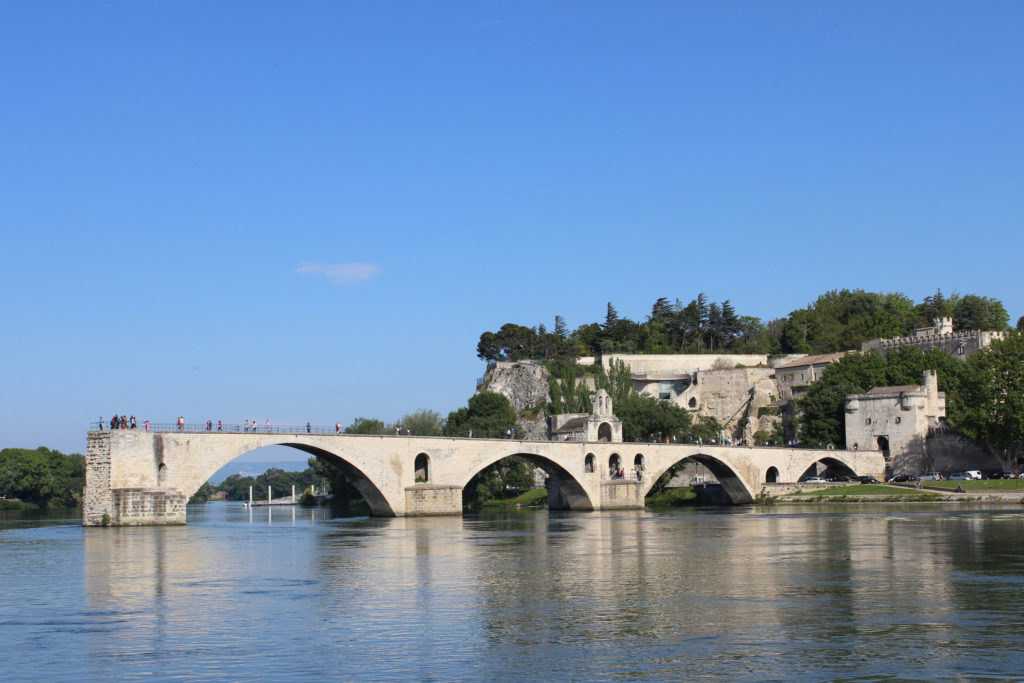
The bridge was 920 metres long and had 22 arches. Construction was begun in the late 12th century and work continued for centuries afterwards. It was damaged several times and rebuilt as a result of climate change, which led to transformations in the River Rhone in the late Middle Ages. The reconstruction work finally came to a halt in the 17th century.
Today there only remain four arches, the Saint Bénezet chapel, which was crowned by the Saint Nicolas chapel in the 15th century, the Chatelet tower, controlling the drawbridge, and the Philippe Le Bel tower, controlling the entrance to the bridge from Villeneuve-les-Avignon.
Films, audio-guides in 11 languages, a museum area and a digital tablet are part of an exciting multimedia visit recounting the history of the town, the River Rhone, the legend of Saint Bénezet, the famous French song about the bridge sung the world over, and the reconstituted bridge shown in 3D in the landscape at different periods.
Listed in 1998: the Abbatial Church of Saint Gilles, as part of the Way of Saint James route in France.
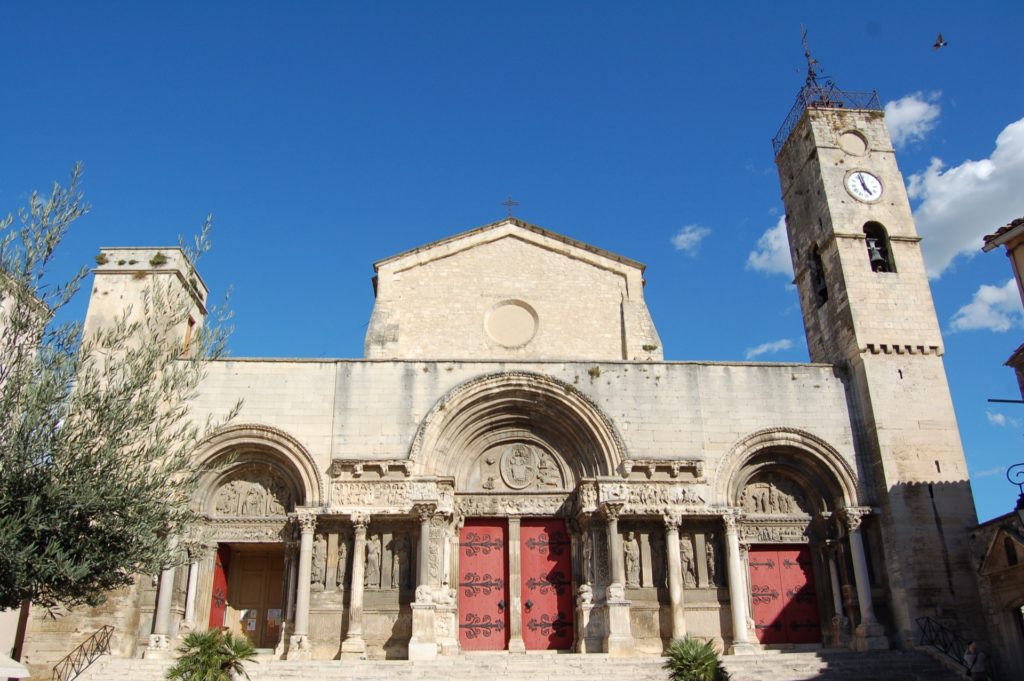
There are 78 listed parts along the Way of Saint James in ten different French regions (64 buildings, 7 groups of properties and 7 path sections).
In the remarkable landscapes of Camargue bordering the Gard and Costière regions, the abbatial church owes its fame to the pilgrimages that developed from the 11th century around Saint Gilles and that became the fourth most important pilgrimage site in Christendom (after Jerusalem, Rome and Santiago de Compostela). The façade of this marvel of Romanesque architecture represents the Old and New Testament. A remarkable bestiary and a frieze recount Christ’s Passion. The monumental crypt houses the tomb of Saint Gilles. Its famous spiral staircase is an architectural model.
Listed in 2008: the Mont-Dauphin stronghold and the fortifications in Briançon, part of a network of 12 major military sites designed by Vauban
Mont-Dauphin stronghold
This structure was created by Vauban on the orders of Louis XIV following an invasion by the Duchy of Savoy’s troops in 1692. Built in a star shape on the steep slopes of a desert plateau known as “mille vents” (“a thousand winds”), it defended Provence and Dauphiné by controlling access to the Durance Valley from Italy.
The fortress ceased to be of use when the border was moved eastwards in 1713. The town that Vauban had planned remained unfinished but an unusual village now thrives in the middle of the stronghold. As it was never besieged, the pink stone ramparts and bastions and the military buildings are perfectly preserved and offer a unique immersion in 18th-century military life.
The Centre for National Monuments offers tours of the fortifications and old military buildings all year round.
The Vauban fortifications in Briançon
This exceptional site is a chance to appreciate the genius shown by Louis XIV’s famous military engineer. Plans for the defensive fortifications were drawn up by Vauban during his visits to Briançon in 1692 and 1700.
On a rocky peak at an altitude of 1326 metres, the upper town of Briançon stands out as a unique example of mountain fortifications. It is encircled by ramparts and crowned by high-altitude strongholds, making it impregnable.
Seven works were awarded recognition for their authentic aspect, their preserved state, their representative nature and the renovations undertaken on them: the Salettes Fort, the Asfeld Bridge, the Trois Têtes Fort, the Dauphin Fort, the Randouillet Fort, the Y communication; as well as the city walls and the work conducted inside the walls: the collegiate church, Place d’Armes and the two powder stores.
The Tourist Office organises several different kinds of visits.
The Essentials, the Original visits, the Spectacular visits (with musicians and actors bringing to life the fortress atmosphere).
Listed in 2014: the Caverne du Pont-d’Arc, known as the Chauvet Cave
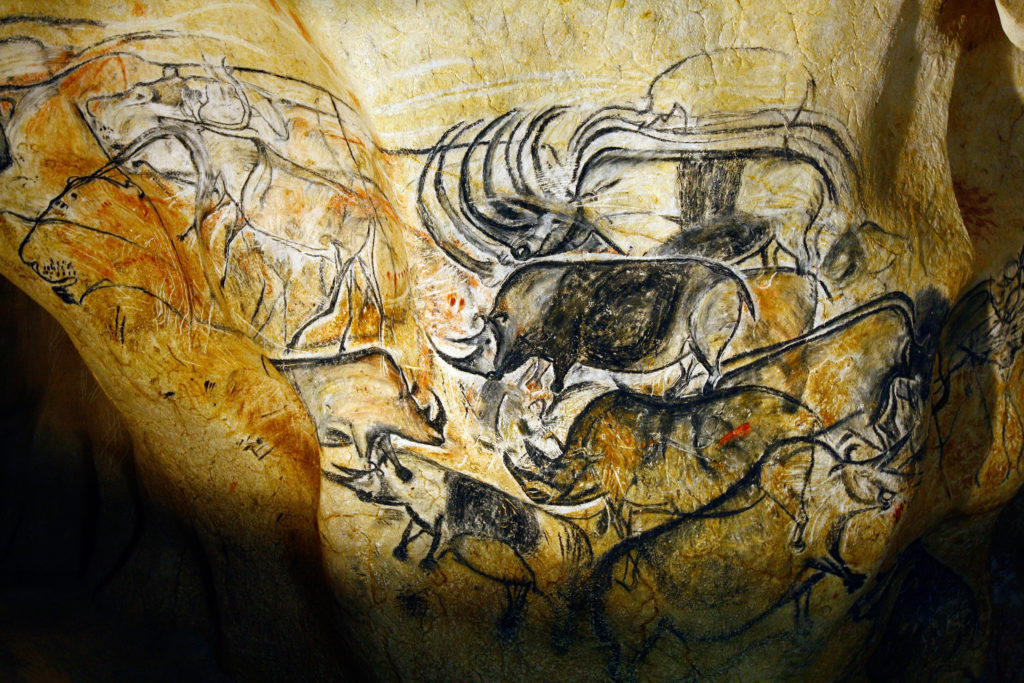
Situated on a limestone plateau traversed by the meandering Ardèche River, the cave contains the oldest paintings known to date, dating back some 36,000 years. More than 1,000 paintings, with anthropomorphic or animal motifs, have been inventoried on its walls.
Their exceptional aesthetic quality testifies to a wide range of techniques, including the mastery of blurring, the combination of painting and engraving, anatomical precision, three-dimensional representation and movement. These include representations of dangerous species that were difficult for humans of the time to observe (mammoths, bears, cave lions, rhinoceroses, bison, aurochs), over 4,000 remains of Paleolithic fauna and various human footprints.
For conservation reasons, the cave cannot be opened to the public, which is why Grotte Chauvet 2 – Ardèche was created. This is the world’s largest replica of a cave in a 20-hectare park.
It recreates the subterranean environment (floors, walls and ceilings, acoustics, etc.) on a scale of 1, as well as paleontological and artistic archaeological remains and decorations (colors, dimensions, textures, formation processes, etc.).
The Aurignacian gallery completes the visit to the cave replica. It allows visitors to explore the prehistoric world through a host of fun, interactive multimedia displays. Immersive films, tactile terminals, woolly rhinoceroses, mammoths, megaceroses and naturalized steppe bison invite visitors to discover the environment, flora and fauna known to the men and women who lived in the cave 36,000 years ago.
The cave is open to visitors in a variety of formats (self-guided tours with the discoverers, themed tours, etc.), as well as a wide range of events (lectures, prehistoric workshops, themed hikes, etc.).
Listed in 2016: the Cité Radieuse by Le Corbusier in Marseille along with 16 other sites awarded for the exceptional architectural contribution of Le Corbusier to the modernist movement.
La Cité radieuse is the work of Swiss architect Charles-Edouard Jeanneret, better known as Le Corbusier. The first of a series of 5 housing units, it was built between 1947 and 1952. A laboratory for a new “housing system”, the Cité Radieuse comprises 337 apartments of 23 different types, providing comfortable, modern accommodation for the time.
In addition to these individual spaces, there are numerous “extensions to the dwelling”, designed for a new approach to collective living, including an interior shopping street, a bookshop and publishing house, a bar, a hotel, a design concept store, a bakery and, on the roof terrace, a nursery school and a gymnasium, which in June 2013 became the MaMo (Contemporary art center).
There’s also a 2.8-hectare park with play areas.
The Office métropolitain de Tourisme et des Congrès offers guided tours for individuals and groups of the shopping street and roof terrace, including an exclusive visit to a listed apartment.
Listed in 2023 : The Maison Carrée in Nîmes
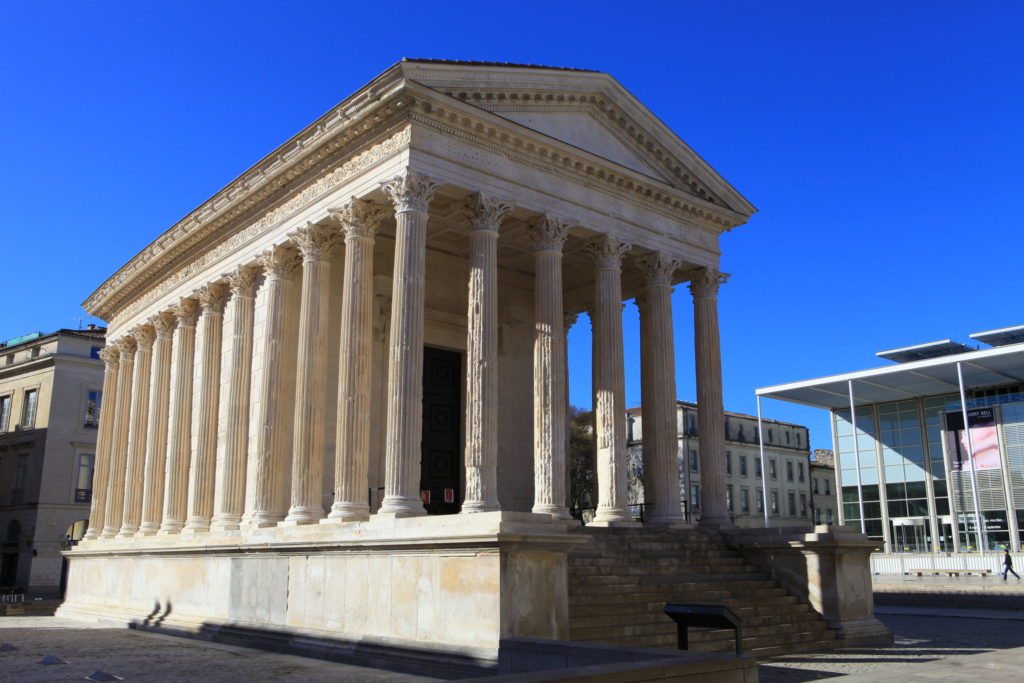
The Maison Carrée was built in the early 1st century AD and was one of the first Roman temples dedicated to the cult of the imperial family. It is the best-preserved Roman temple in the world.
The architecture in Corinthian style recalls the major buildings of the Augustan period in Rome.
The temple stood south of the forum, which was a vast public area at the heart of the Roman city of Nemausus.
A new interpretation centre recounts the history of the monument and the historic context in which it was built. Visitors can find out more about Roman architecture, the imperial cult and the influences and meaning of the Maison Carrée’s remarkable decoration. The visit is available in 3 languages (French, English and Spanish).
